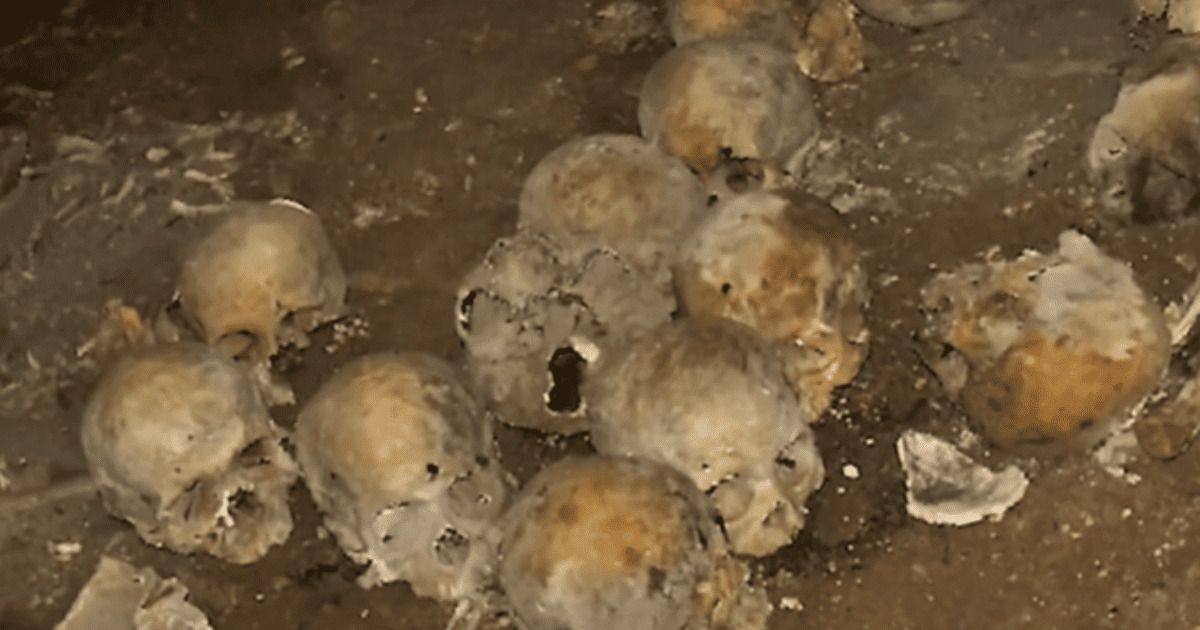Police in Mexico over a decade stumbled upon one of the most gruesome crime scenes in Mexico’s history.
In 2012 police officers in Mexico discovered over 150 skulls inside a cave located in southern Chiapas state.
The skulls were immediately taken to a forensic lab where anthropologists and other crime lab experts studied the skulls.
Well now after a long 10 years anthropologists were able to determine that the skulls were from a sacrificial ritual during the year AD 900.
Experts who studied the skulls also reported that the victims whose skulls were discovered were “probably ritually beheaded and the skulls put on display on a kind of trophy rack known as a “tzompantli.
Police found 150 skulls at a "crime scene" in Mexico. It turns out the victims, mostly women, were ritually decapitated over 1,000 years ago. https://t.co/QTeueGaJQZ pic.twitter.com/G9Y088XDxL
— CBS News (@CBSNews) April 28, 2022
150 skulls in Mexican cave thought to be more than a 'crime scene' https://t.co/fM1YOLEShr pic.twitter.com/v0xl5HGbDD
— USA TODAY (@USATODAY) April 29, 2022
The New York Post shared these e details on the sinister story:
When Mexican cops stumbled upon a pile of about 150 skulls in a cave near the Guatemalan border a decade ago, they thought they were looking at a crime scene.
In a way, they were correct, but it has turned out to be a very cold case dating back a millennium.
It took 10 years of tests and analysis to determine the toothless craniums of men and women were from sacrificial victims killed between AD 900 and 1200, the National Institute of Anthropology and History said Wednesday.
“Believing they were looking at a crime scene, investigators collected the bones and started examining them in Tuxtla Gutierrez,” the state capital, the institute, known as INAH, said in a statement.
The police in 2012 weren’t being stupid; the border area around the town of Frontera Comalapa in southern Chiapas state has long been plagued by violence and immigrant trafficking. And pre-Hispanic skull piles in Mexico usually show a hole bashed through each side of every skull, and were usually found in ceremonial plazas, not caves.
But experts said Wednesday the victims in the cave had probably been ritually beheaded and the skulls put on display on a kind of trophy rack known as a “tzompantli.”
"Mexico police found 150 skulls in a cave. Turns out they were decapitated in an ancient ritual." (via @AP) https://t.co/qIZB1Oj1Hi
— Dan Nowicki (@dannowicki) April 28, 2022
AZ Central got the scoop too:
When Mexican police found a pile of about 150 skulls in a cave near the Guatemalan border, they thought they were looking at a crime scene, and took the bones to the state capital.
It turns out it was a very cold case.
It took a decade of tests and analysis to determine the skulls were from sacrificial victims killed between A.D. 900 and 1200, the National Institute of Anthropology and History said Wednesday.
“Believing they were looking at a crime scene, investigators collected the bones and started examining them in Tuxtla Gutierrez,” the state capital, the institute, known as INAH, said in a statement.
The police in 2012 weren’t being stupid; the border area around the town of Frontera Comalapa in southern Chiapas state has long been plagued by violence and immigrant trafficking. And pre-Hispanic skull piles in Mexico usually show a hole bashed through each side of every skull, and were usually found in ceremonial plazas, not caves.
But experts said Wednesday the victims in the cave had probably been ritually decapitated and the skulls put on display on a kind of trophy rack known as a “tzompantli.” Spanish conquistadores wrote about seeing such racks in the 1520s, and some Spaniards’ heads even wound up on them.



Join the conversation!
Please share your thoughts about this article below. We value your opinions, and would love to see you add to the discussion!